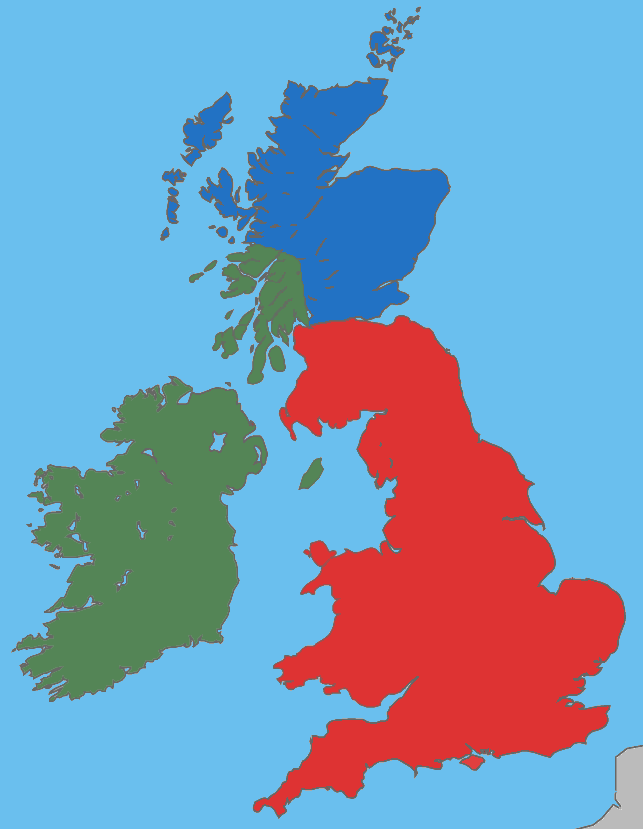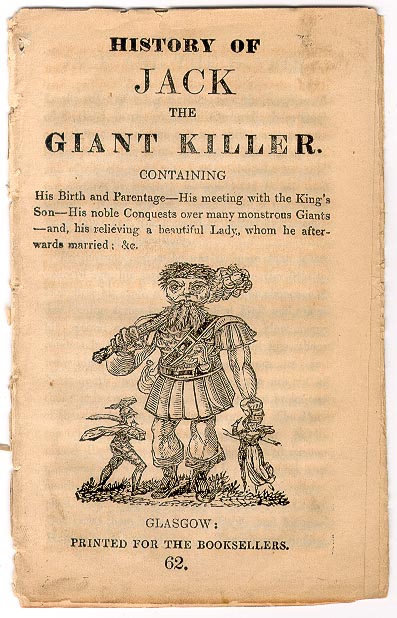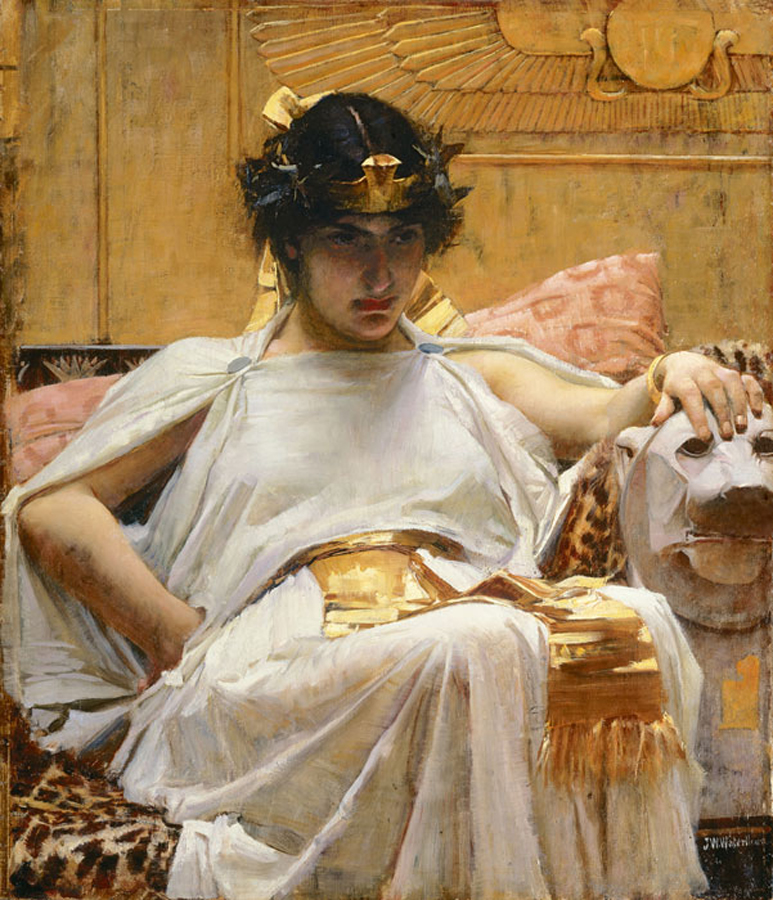|
Fe-fi-fo-fum
"Fee-fi-fo-fum" is the first line of a historical quatrain (or sometimes couplet) famous for its use in the classic English folklore, English fairy tale "Jack and the Beanstalk". The poem, as given in Joseph Jacobs' 1890 rendition, is as follows: Fee-fi-fo-fum, I smell the blood of English young, Be he alive, or be he dead I'll have his bones to grind my bread. Though the rhyme is tetrameter, tetrametric, it follows no consistent metrical foot; however, the lines correspond roughly to a syllable, monosyllabic tetrameter, a dactylic tetrameter, a trochaic tetrameter, and an iambic tetrameter respectively. The poem has historically made use of assonance, assonant half rhyme. Origin The rhyme appears in the 1596 pamphlet "Have with You to Saffron-Walden, Haue with You to Saffron-Walden" written by Thomas Nashe, who mentions that the rhyme was already old and its origins obscure: In William Shakespeare's play ''King Lear'' (c. 1605), in Act III, Scene IV, the character Edgar ... [...More Info...] [...Related Items...] OR: [Wikipedia] [Google] [Baidu] |
Quatrain
A quatrain is a type of stanza, or a complete poem, consisting of four Line (poetry), lines. Existing in a variety of forms, the quatrain appears in poems from the poetic traditions of various ancient civilizations including Persia, Ancient India, Ancient Greece, Ancient Rome, and Classical Chinese poetry forms, China, and continues into the 21st century, where it is seen in works published in many languages. This form of poetry has been continually popular in Iran since the medieval period, as Ruba'is form; an important faction of the vast repertoire of Persian language, Persian poetry, with famous poets such as Omar Khayyam and Mahsati Ganjavi of Seljuk Persia writing poetry only in this format. Michel de Nostredame (Nostradamus) used the quatrain form to deliver his famous "Les Propheties, prophecies" in the 16th century. There are fifteen possible rhyme schemes, but the most traditional and common are Chain rhyme, ABAA, Monorhyme, AAAA, Rhyme scheme, ABAB, and Enclosed rhym ... [...More Info...] [...Related Items...] OR: [Wikipedia] [Google] [Baidu] |
William Shakespeare
William Shakespeare ( 23 April 1564 – 23 April 1616) was an English playwright, poet and actor. He is widely regarded as the greatest writer in the English language and the world's pre-eminent dramatist. He is often called England's national poet and the "Bard of River Avon, Warwickshire, Avon" or simply "the Bard". His extant works, including William Shakespeare's collaborations, collaborations, consist of some Shakespeare's plays, 39 plays, Shakespeare's sonnets, 154 sonnets, three long narrative poems and a few other verses, some of uncertain authorship. His plays List of translations of works by William Shakespeare, have been translated into every major modern language, living language and are performed more often than those of any other playwright. Shakespeare remains arguably the most influential writer in the English language, and his works continue to be studied and reinterpreted. Shakespeare was born and raised in Stratford-upon-Avon, Warwickshire. At the age of 18 ... [...More Info...] [...Related Items...] OR: [Wikipedia] [Google] [Baidu] |
Apollo 17
Apollo 17 (December 7–19, 1972) was the eleventh and final mission of NASA's Apollo program, the sixth and most recent time humans have set foot on the Moon. Commander Gene Cernan and Lunar Module Pilot Harrison Schmitt walked on the Moon, while Command Module Pilot Ronald Evans (astronaut), Ronald Evans orbited above. Schmitt was the only professional geologist to land on the Moon; he was selected in place of Joe Engle, as NASA had been under pressure to send a scientist to the Moon. The mission's heavy emphasis on science meant the inclusion of a number of new experiments, including a Fe, Fi, Fo, Fum, and Phooey, biological experiment containing five mice that was carried in the command module. Mission planners had two primary goals in deciding on the landing site: to sample Lunar highlands, lunar highland material older than that at Mare Imbrium and to investigate the possibility of relatively recent Volcano, volcanic activity. They therefore selected Taurus–Littrow, wh ... [...More Info...] [...Related Items...] OR: [Wikipedia] [Google] [Baidu] |
Fe, Fi, Fo, Fum, And Phooey
Fe, Fi, Fo, Fum, and Phooey were five mice who traveled to the Moon and circled it 75 times on the 1972 Apollo 17 mission. NASA gave them identification numbers A3305, A3326, A3352, A3356, and A3400, and their nicknames were given by the Apollo 17 crew ( Eugene Cernan, Harrison Schmitt, and Ronald Evans). The four male mice, one female mouse, and Evans orbited the Moon for a record-setting six days and four hours in the Apollo command module ''America'' as Cernan and Schmitt performed the Apollo program's last lunar excursions. The mice travelled in individual compartments of tubes inside an aluminium container with "a sufficient food supply, temperature control, and a reserve of potassium superoxide that absorbed the from their respiration and provided them with fresh oxygen." One of the male mice died (A-3352) during the trip, and the four survivors were euthanized and dissected for their expected biological information upon their return from the Moon. The three astronaut ... [...More Info...] [...Related Items...] OR: [Wikipedia] [Google] [Baidu] |
Celts
The Celts ( , see Names of the Celts#Pronunciation, pronunciation for different usages) or Celtic peoples ( ) were a collection of Indo-European languages, Indo-European peoples. "The Celts, an ancient Indo-European people, reached the apogee of their influence and territorial expansion during the 4th century BC, extending across the length of Europe from Britain to Asia Minor."; . "[T]he Celts, were Indo-Europeans, a fact that explains a certain compatibility between Celtic, Roman, and Germanic mythology."; . "The Celts and Germans were two Indo-European groups whose civilizations had some common characteristics."; . "Celts and Germans were of course derived from the same Indo-European stock."; . "Celt, also spelled Kelt, Latin Celta, plural Celtae, a member of an early Indo-European people who from the 2nd millennium bce to the 1st century bce spread over much of Europe." in Europe and Anatolia, identified by their use of Celtic languages and other cultural similarities.. "C ... [...More Info...] [...Related Items...] OR: [Wikipedia] [Google] [Baidu] |
Goidelic Languages
The Goidelic ( ) or Gaelic languages (; ; ) form one of the two groups of Insular Celtic languages, the other being the Brittonic languages. Goidelic languages historically formed a dialect continuum stretching from Ireland through the Isle of Man to Scotland. There are three modern Goidelic languages: Irish ('), Scottish Gaelic ('), and Manx ('). Manx died out as a first language in the 20th century but has since been revived to some degree. Nomenclature ''Gaelic'', by itself, is sometimes used to refer to Scottish Gaelic, especially in Scotland, and therefore is ambiguous. Irish and Manx are sometimes referred to as Irish Gaelic and Manx Gaelic (as they are Goidelic or Gaelic languages), but the use of the word ''Gaelic'' is unnecessary because the terms Irish and Manx, when used to denote languages, always refer to those languages. This is in contrast to Scottish Gaelic, for which "Gaelic" distinguishes the language from the Germanic language known as Scots. In Englis ... [...More Info...] [...Related Items...] OR: [Wikipedia] [Google] [Baidu] |
Charles Mackay (author)
Charles Mackay (27 March 1814 – 24 December 1889) was a Scottish poet, journalist, author, anthologist, novelist, and songwriter, remembered mainly for his book ''Extraordinary Popular Delusions and the Madness of Crowds''. Early life Charles Mackay was born in Perth. His father, George Mackay, was a bombardier in the Royal Artillery, and his mother Amelia Cargill died shortly after his birth. Mackay was educated at the Caledonian Asylum, in London. In 1828 he was placed by his father at a school in Brussels, on the Boulevard de Namur, shortly taken over by William James Joseph Drury; and studied languages. In 1830 he was engaged as a private secretary to William Cockerill, the ironmaster, near Liège, began writing in French in the ''Courrier Belge'', and sent English poems to a local newspaper called ''The Telegraph''. In the summer of 1830 he visited Paris, and he spent 1831 with Cockerill at Aix-la-Chapelle. In May 1832 his father brought him back to London, where ... [...More Info...] [...Related Items...] OR: [Wikipedia] [Google] [Baidu] |
Thunderdell
Thunderdell (), also recorded as Thunderdel, Thunderel, Thundrel, Thunderdale, or Thunderbore, was a two-headed giant of Cornwall slain by Jack the Giant-Killer in the stories of Tabart and others. Jeff Rovin's ''The Encyclopedia of Monsters'' (New York: Facts on File, 1989) misspells Thunderdell as "Thunderel", and after describing him, proceeds to tell the basic story of " Jack and the Beanstalk" with no further mention of "Thunderel", despite being the title of the entry. He then refers readers to Cormoran. Appearance In ''Jack the Giant Killer'', Thunderdell first appeared where he crashed a banquet that was prepared for Jack. During this time, he chanted "fee fau fum." Jack defeats and beheads the two-headed giant with a trick involving the house's moat and drawbridge. According to one version of the story from 1800, Thunderdell (here identified as "Thunderful") hails from the North Pole. He attacks Jack's banquet in order to avenge the deaths of two giants he had ear ... [...More Info...] [...Related Items...] OR: [Wikipedia] [Google] [Baidu] |
Chapbook
A chapbook is a type of small printed booklet that was a popular medium for street literature throughout early modern Europe. Chapbooks were usually produced cheaply, illustrated with crude woodcuts and printed on a single sheet folded into 8, 12, 16, or 24 pages, sometimes bound with a saddle stitch. Printers provided chapbooks on credit to chapmen, who sold them both from door to door and at markets and fairs, then paying for the stock they sold. The tradition of chapbooks emerged during the 16th century as printed books were becoming affordable, with the medium ultimately reaching its height of popularity during the 17th and 18th centuries. Various ephemera and popular or folk literature were published as chapbooks, such as almanacs, children's literature, folklore, ballads, nursery rhymes, pamphlets, poetry, and political and religious Tract (literature), tracts. The term ''chapbook'' remains in use by publishers to refer to short, inexpensive booklets. Terminology ''Chapbook ... [...More Info...] [...Related Items...] OR: [Wikipedia] [Google] [Baidu] |
Jack The Giant-Killer
"Jack the Giant Killer" is a Cornish fairy tale and legend about a man who slays a number of bad giants during King Arthur's reign. The tale is characterised by violence, gore and blood-letting. Giants are prominent in Cornish folklore, Breton mythology and Welsh Bardic lore. Some parallels to elements and incidents in Norse mythology have been detected in the tale, and the trappings of Jack's last adventure with the Giant Galigantus suggest parallels with French and Breton fairy tales such as Bluebeard. Jack's belt is similar to the belt in "The Valiant Little Tailor", and his magical sword, shoes, cap, and cloak are similar to those owned by Tom Thumb or those found in Welsh and Norse mythology. Jack and his tale are rarely referenced in English literature prior to the eighteenth century (there is an allusion to Jack the Giant Killer in William Shakespeare's ''King Lear'', where in Act 3, one character, Edgar, in his feigned madness, cries, "Fie, foh, and fum,/ I smell th ... [...More Info...] [...Related Items...] OR: [Wikipedia] [Google] [Baidu] |
Mark Antony
Marcus Antonius (14 January 1 August 30 BC), commonly known in English as Mark Antony, was a Roman people, Roman politician and general who played a critical role in the Crisis of the Roman Republic, transformation of the Roman Republic from a Constitution of the Roman Republic, constitutional republic into the autocratic Roman Empire. Antony was a relative and supporter of Julius Caesar, and he served as one of his generals during the conquest of Gaul and Caesar's civil war. Antony was appointed administrator of Italy while Caesar eliminated political opponents in Greece, North Africa, and Spain. After Assassination of Julius Caesar, Caesar's assassination in 44 BC, Antony joined forces with Lepidus, another of Caesar's generals, and Octavian, Caesar's great-nephew and adopted son, forming a three-man dictatorship known to historians as the Second Triumvirate. The Triumvirs defeated Caesar's killers, the ''Liberatores'', at the Battle of Philippi in 42 BC, and divided th ... [...More Info...] [...Related Items...] OR: [Wikipedia] [Google] [Baidu] |
Antony And Cleopatra
''Antony and Cleopatra'' is a tragedy by William Shakespeare. The play was first performed around 1607, by the King's Men at either the Blackfriars Theatre or the Globe Theatre. Its first appearance in print was in the First Folio published in 1623, under the title ''The Tragedie of Anthonie, and Cleopatra''. The plot is based on Thomas North's 1579 English translation of Plutarch's '' Lives'' (in Ancient Greek) and follows the relationship between Cleopatra and Mark Antony from the time of the Sicilian revolt to Cleopatra's suicide during the War of Actium. The main antagonist is Octavius Caesar, one of Antony's fellow triumvirs of the Second Triumvirate and the first emperor of the Roman Empire. The tragedy is mainly set in the Roman Republic and Ptolemaic Egypt and is characterized by swift shifts in geographical location and linguistic register as it alternates between sensual, imaginative Alexandria and a more pragmatic, austere Rome. Many consider Shakespeare's ... [...More Info...] [...Related Items...] OR: [Wikipedia] [Google] [Baidu] |











